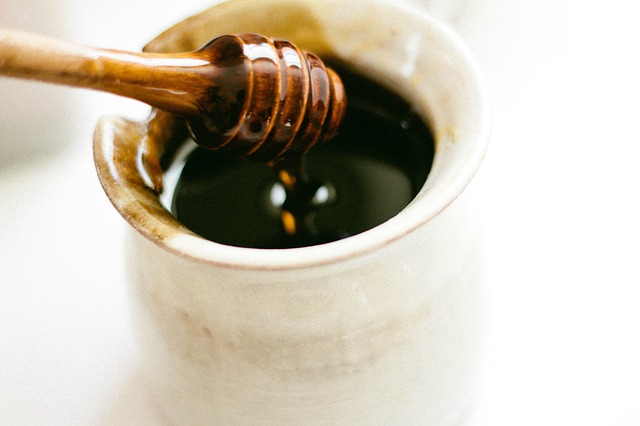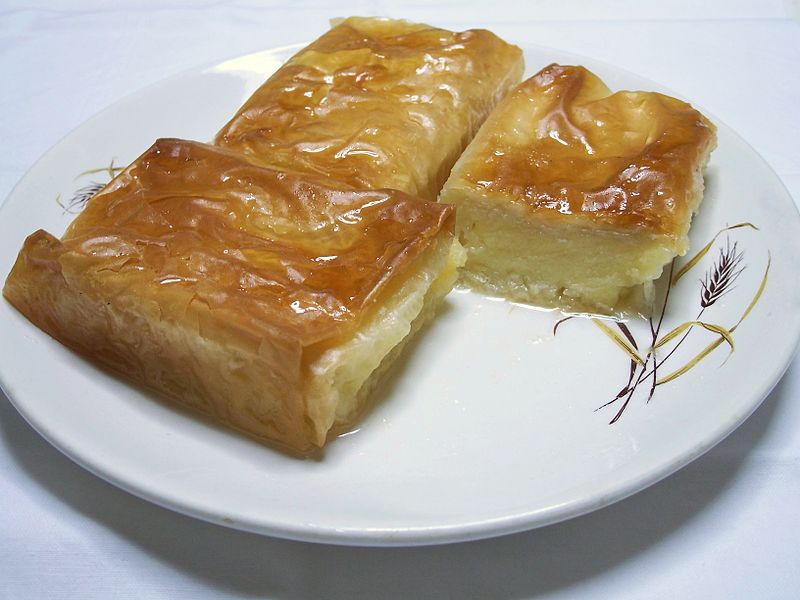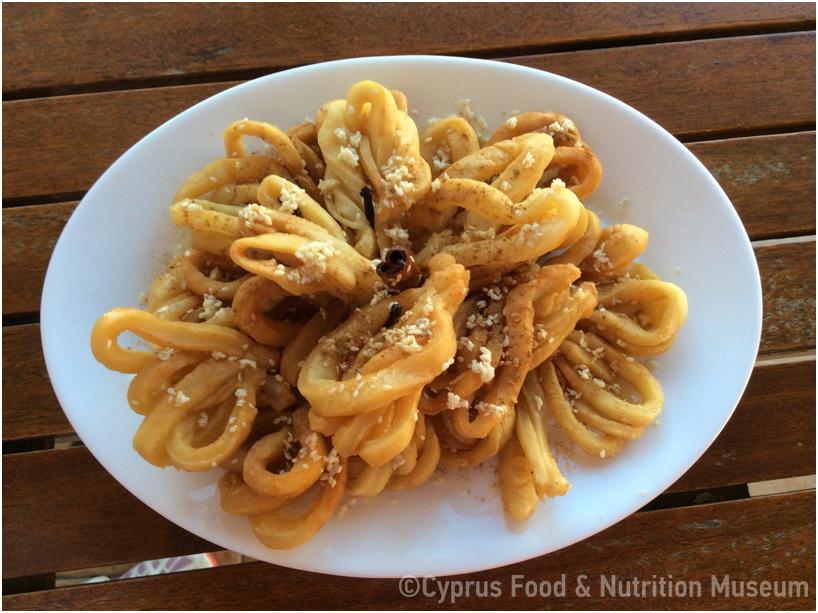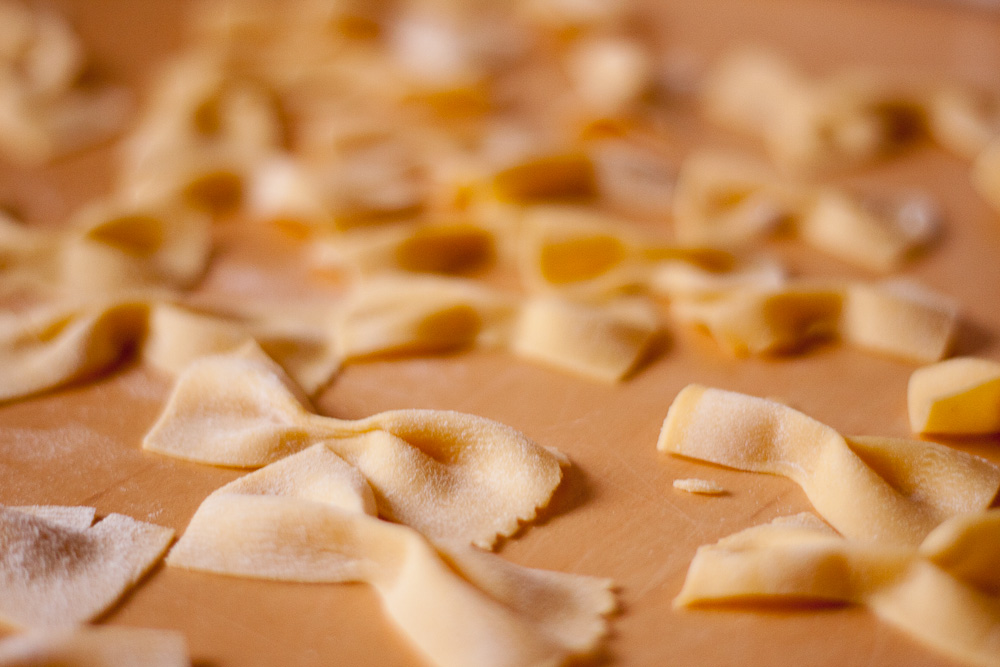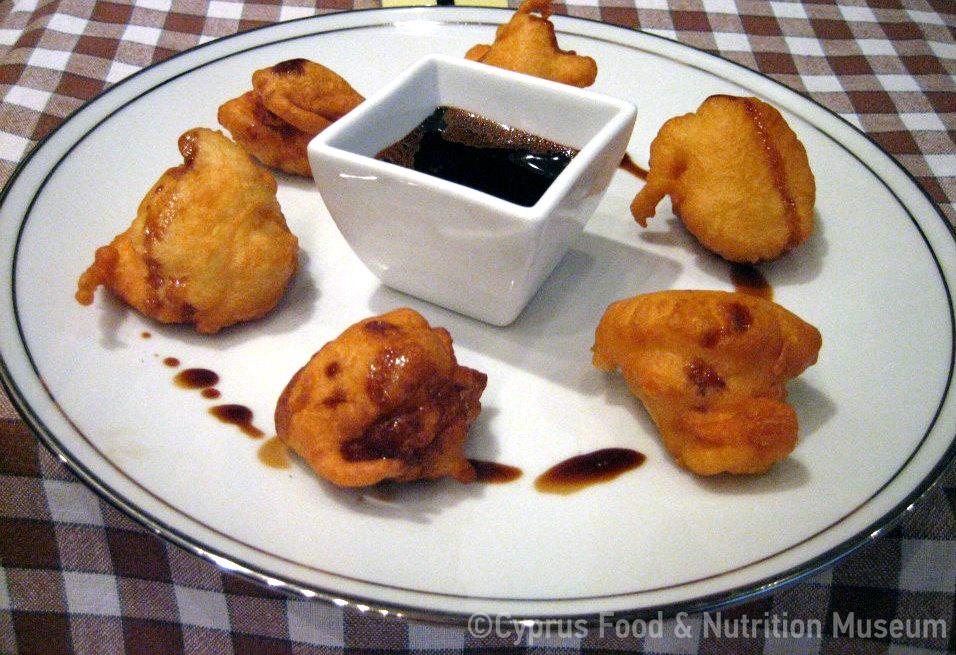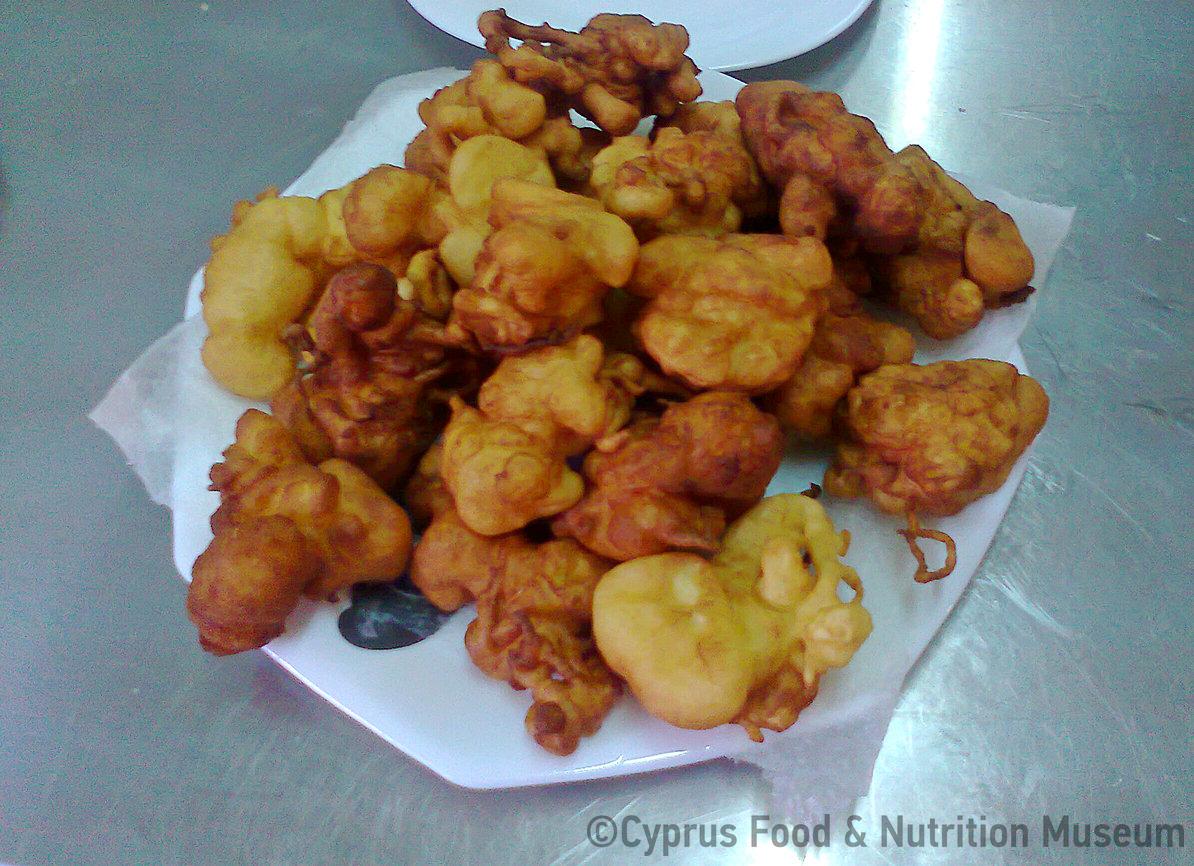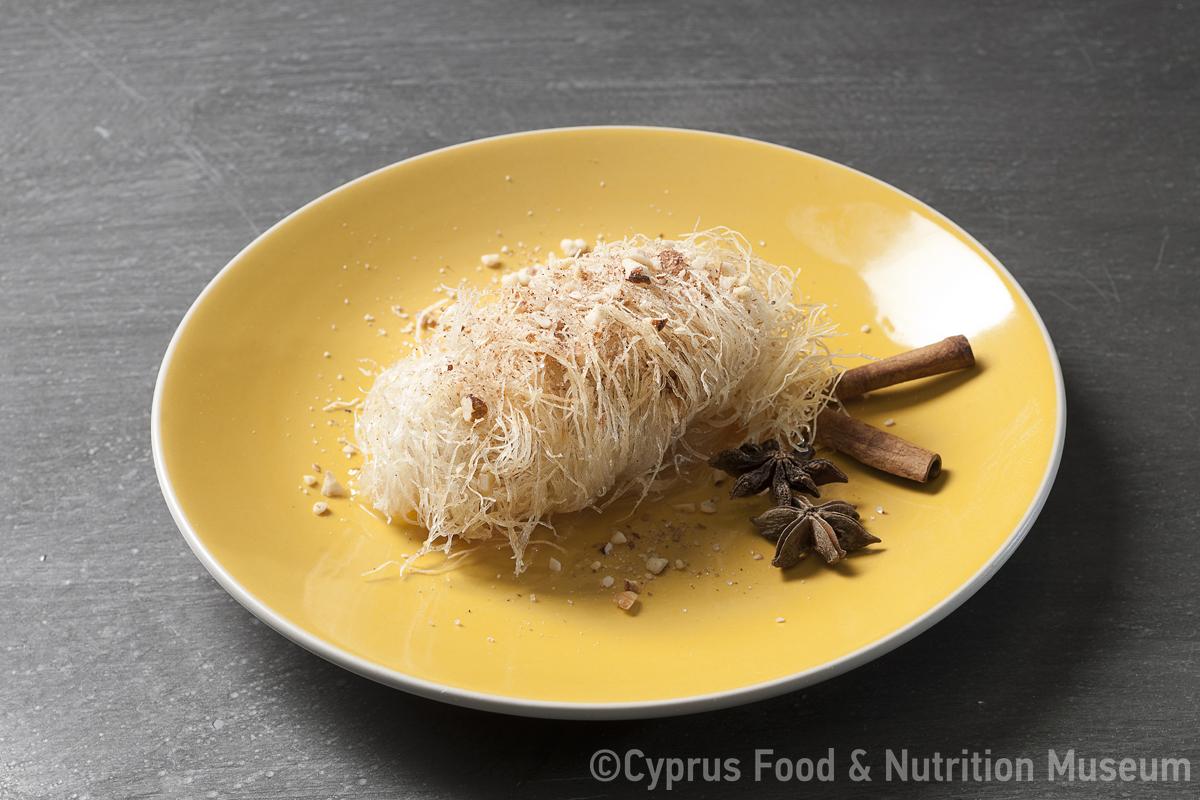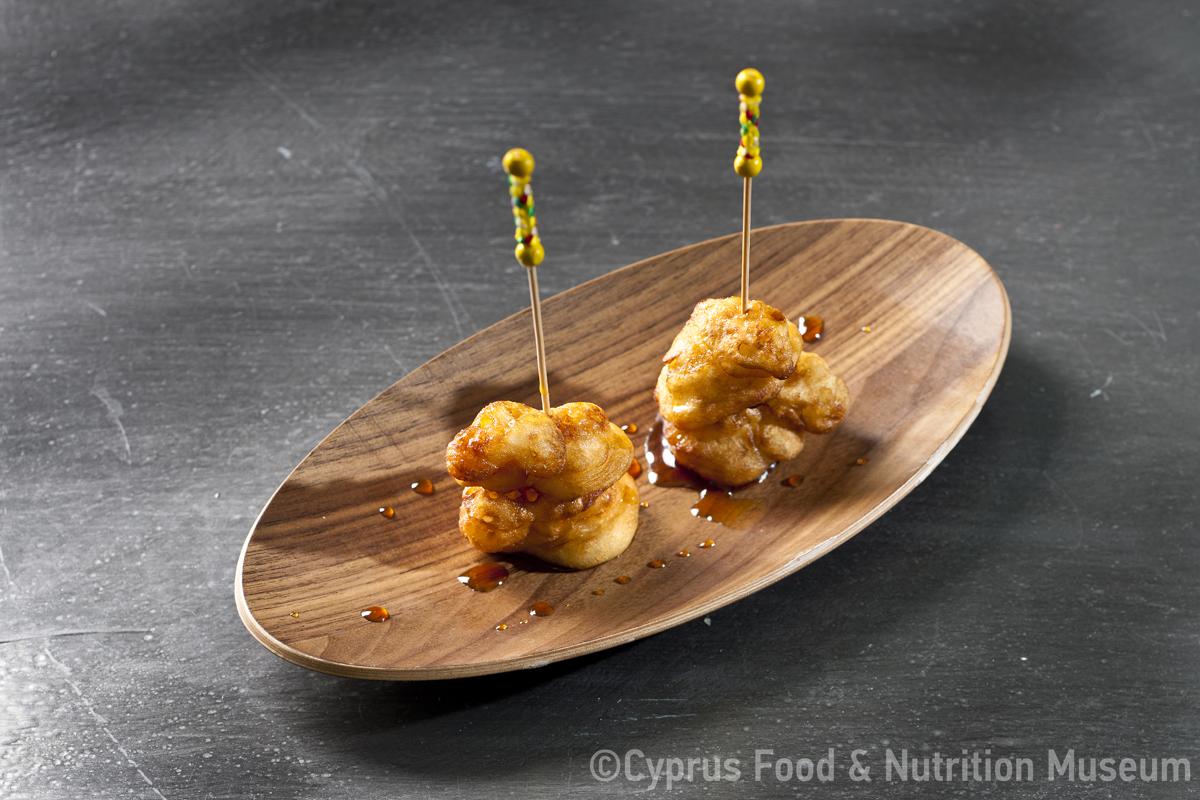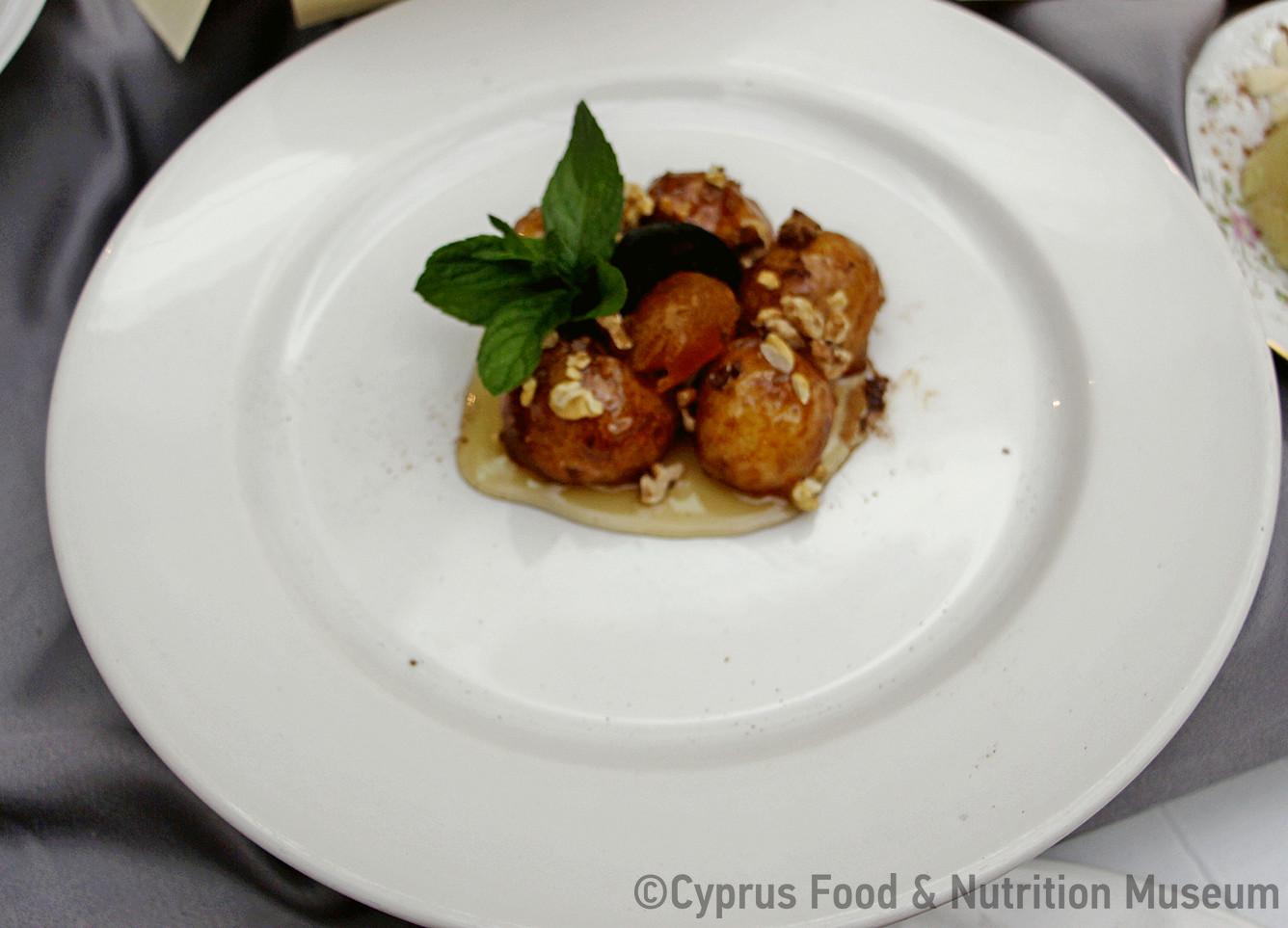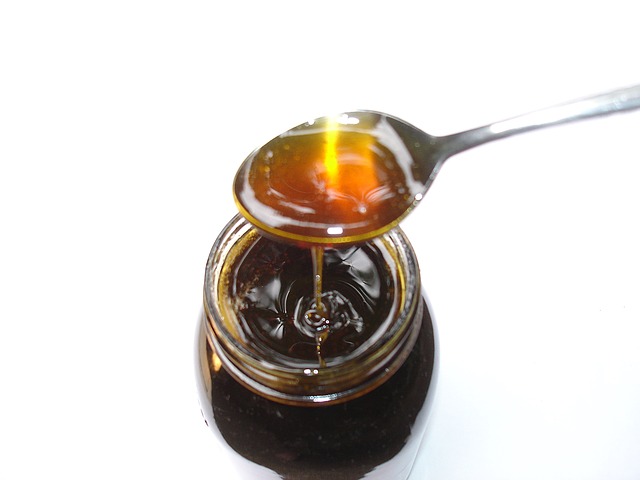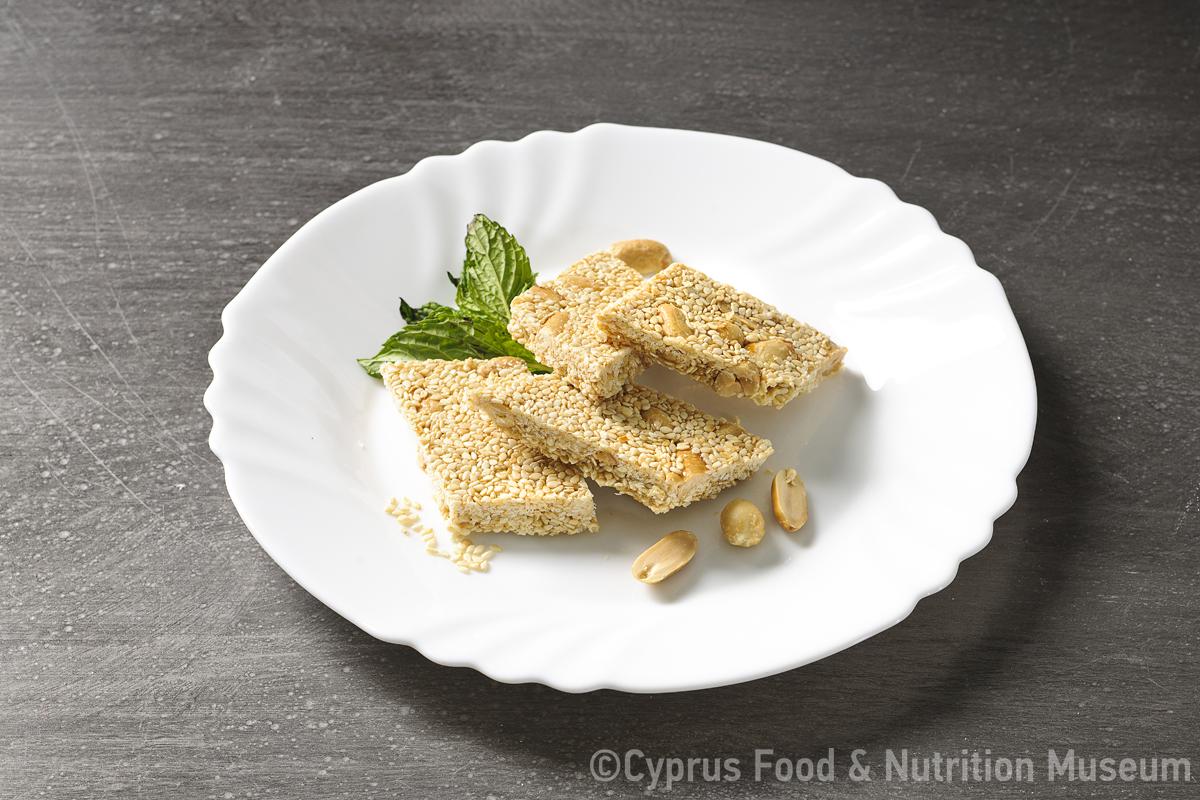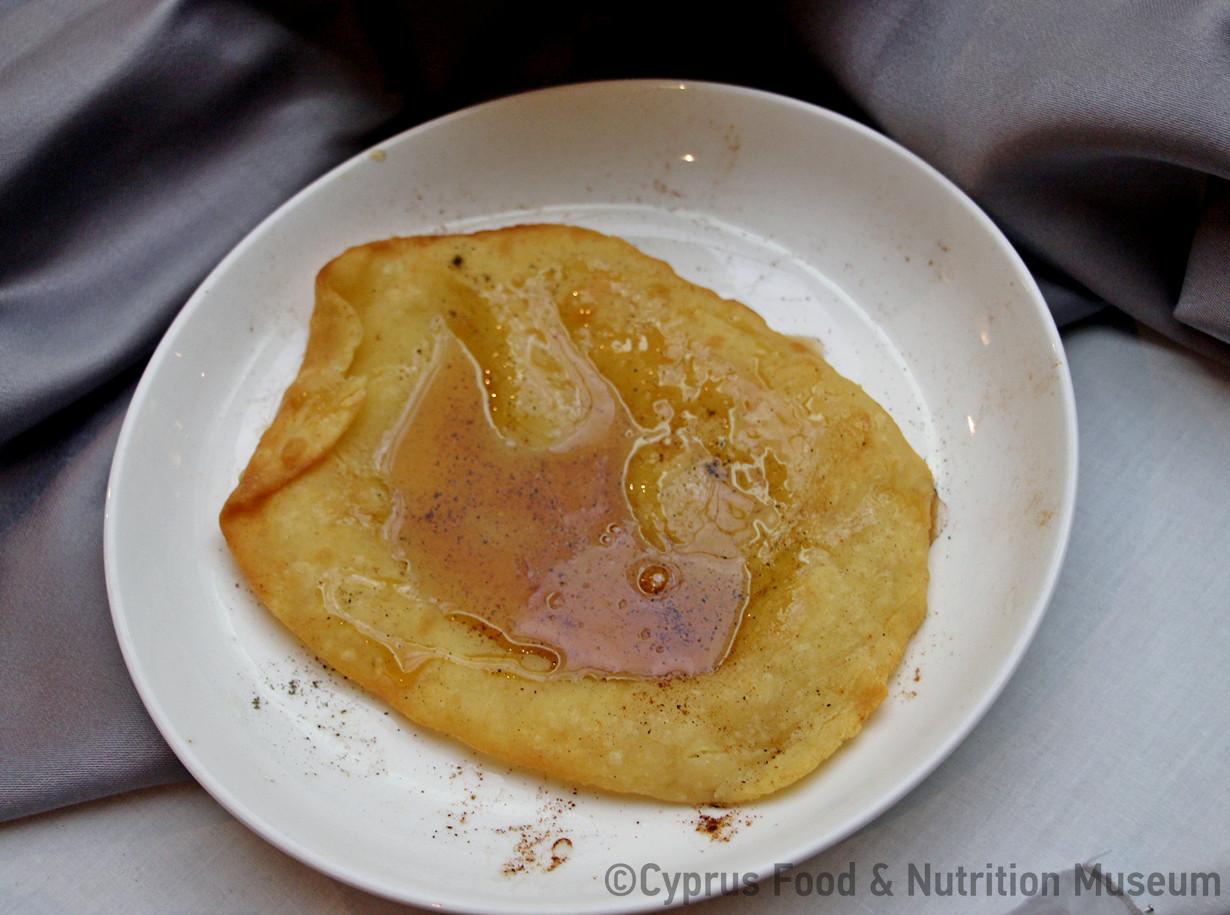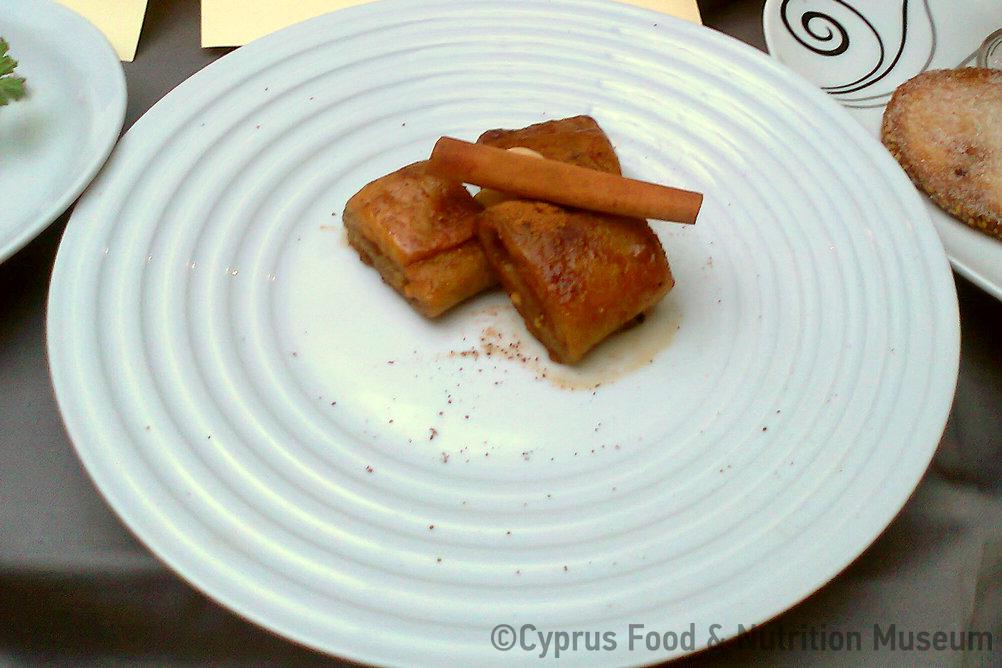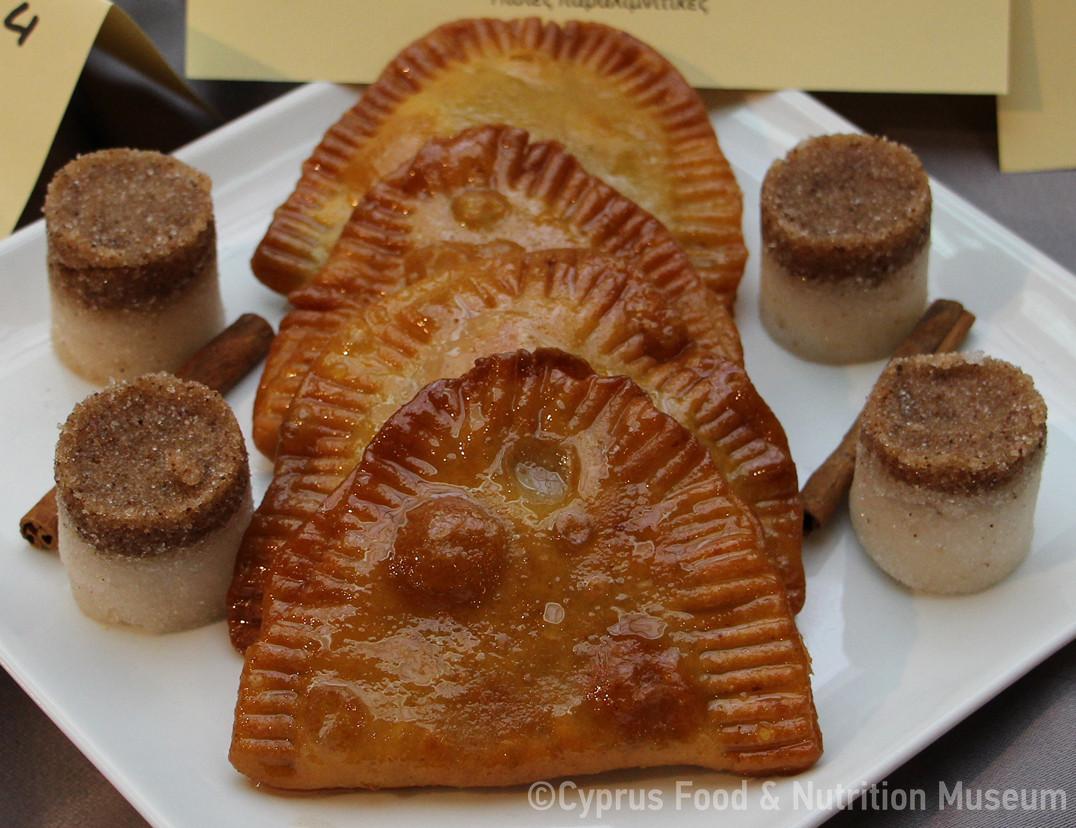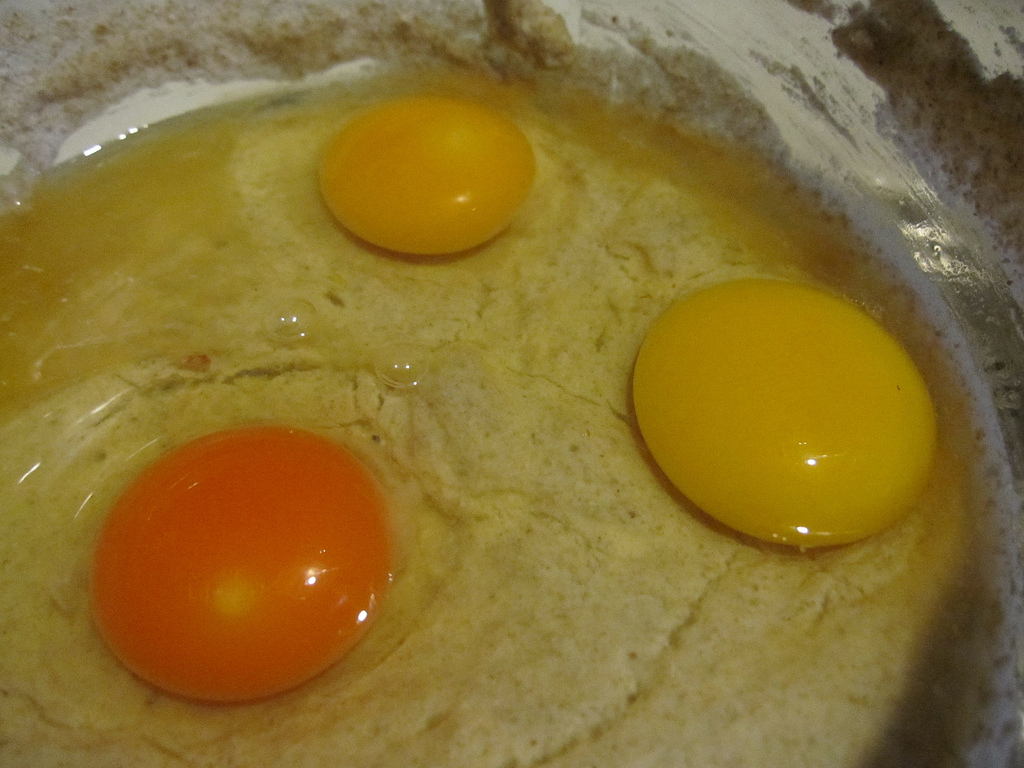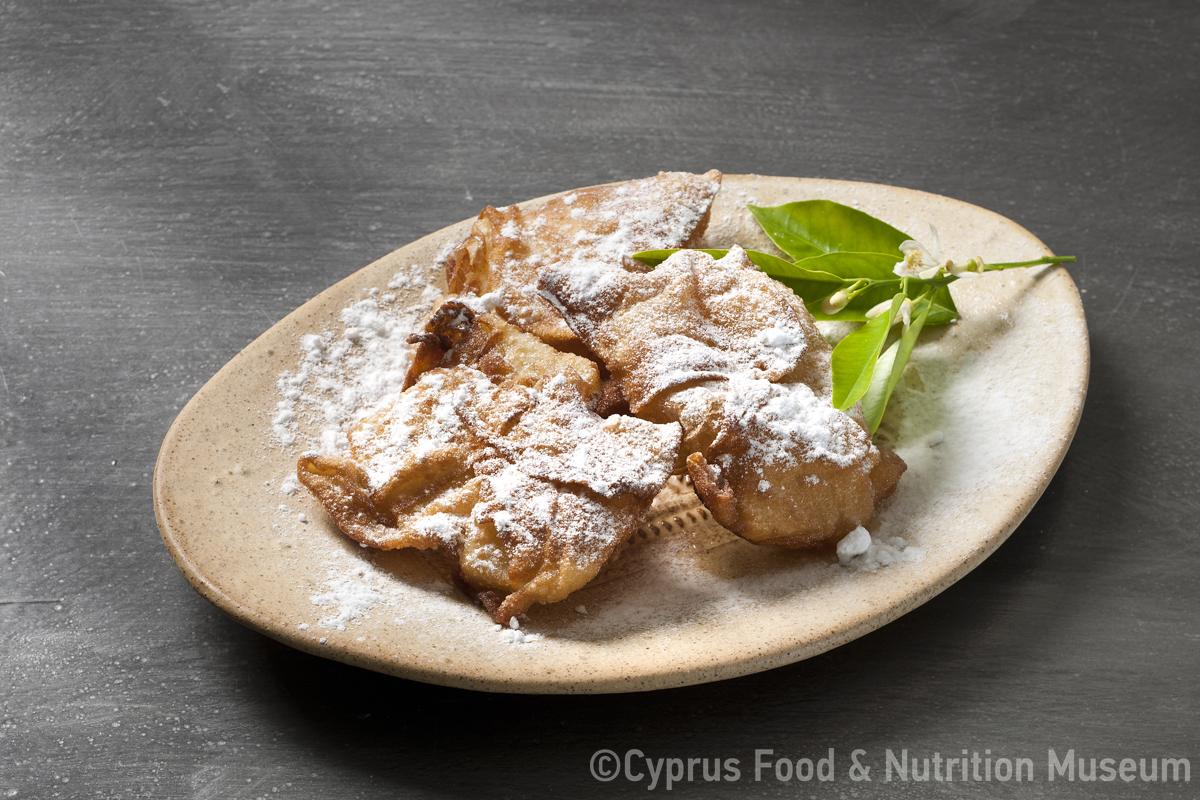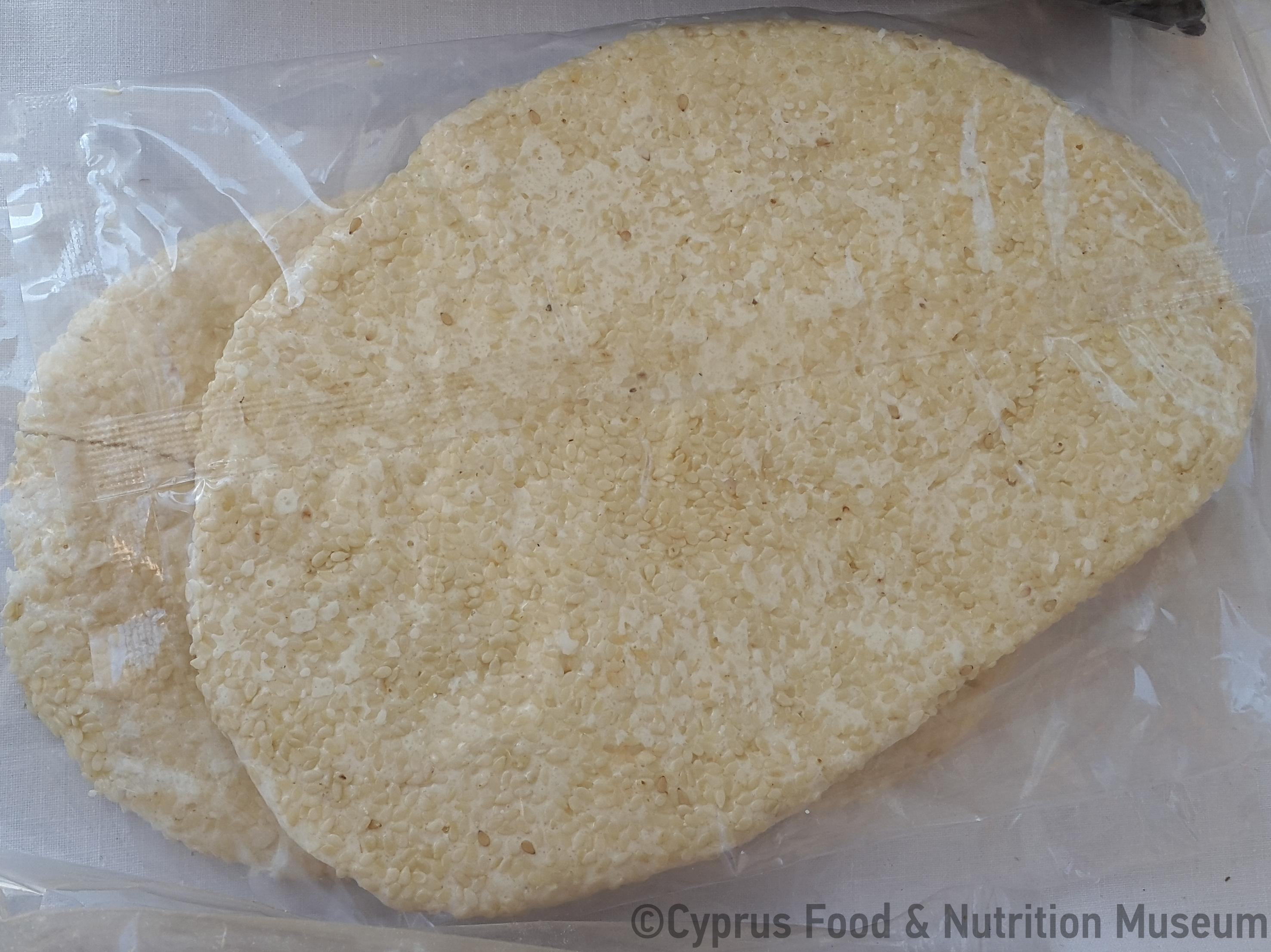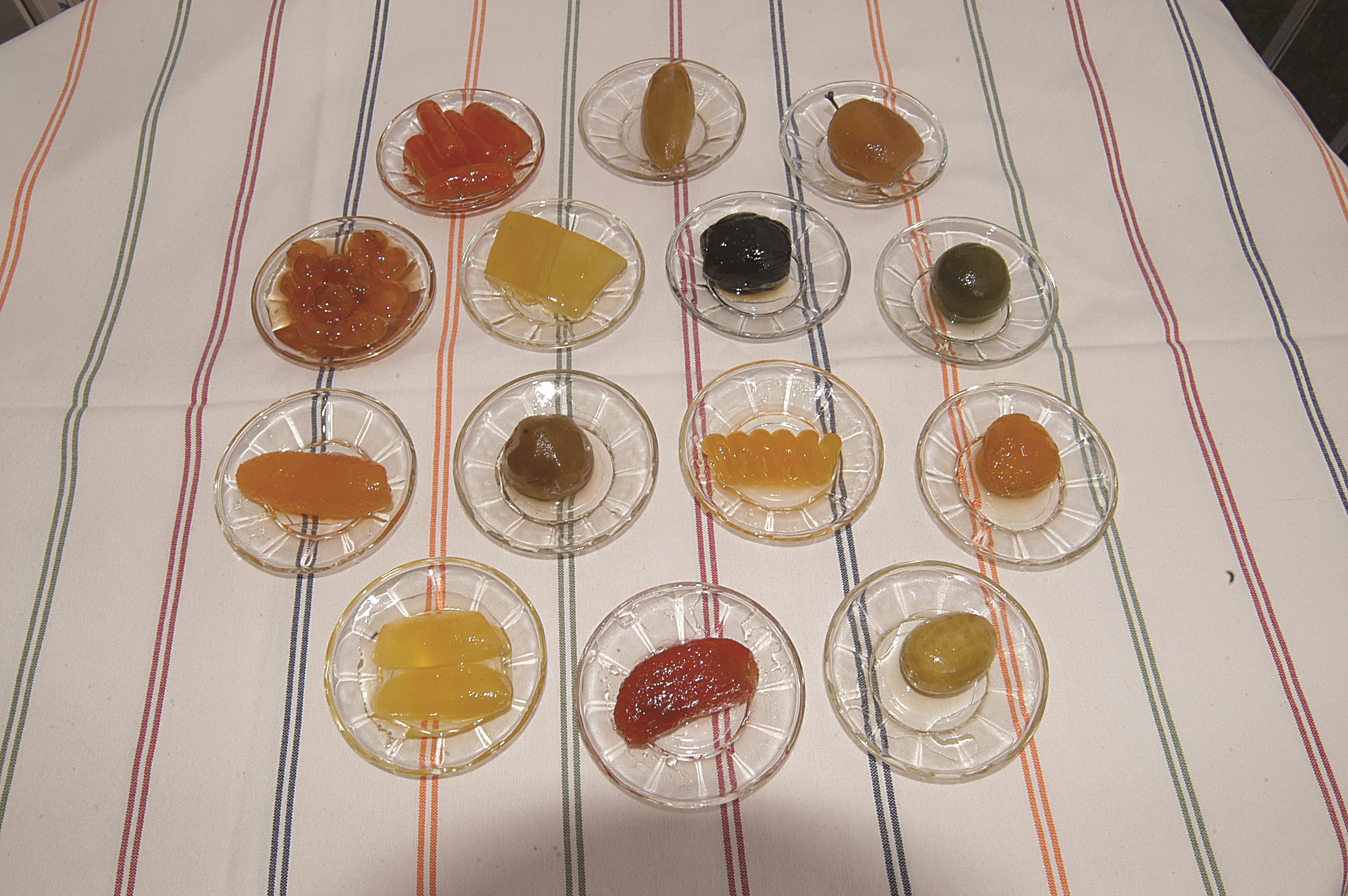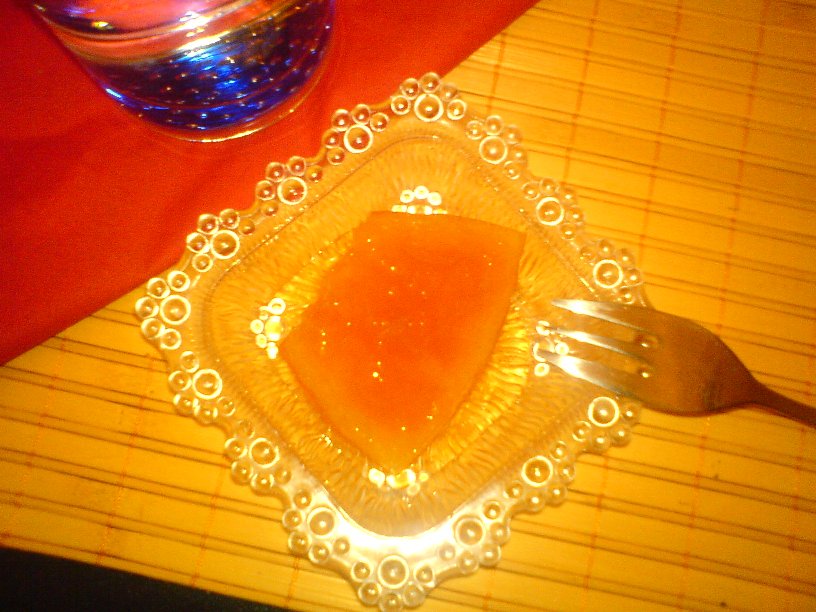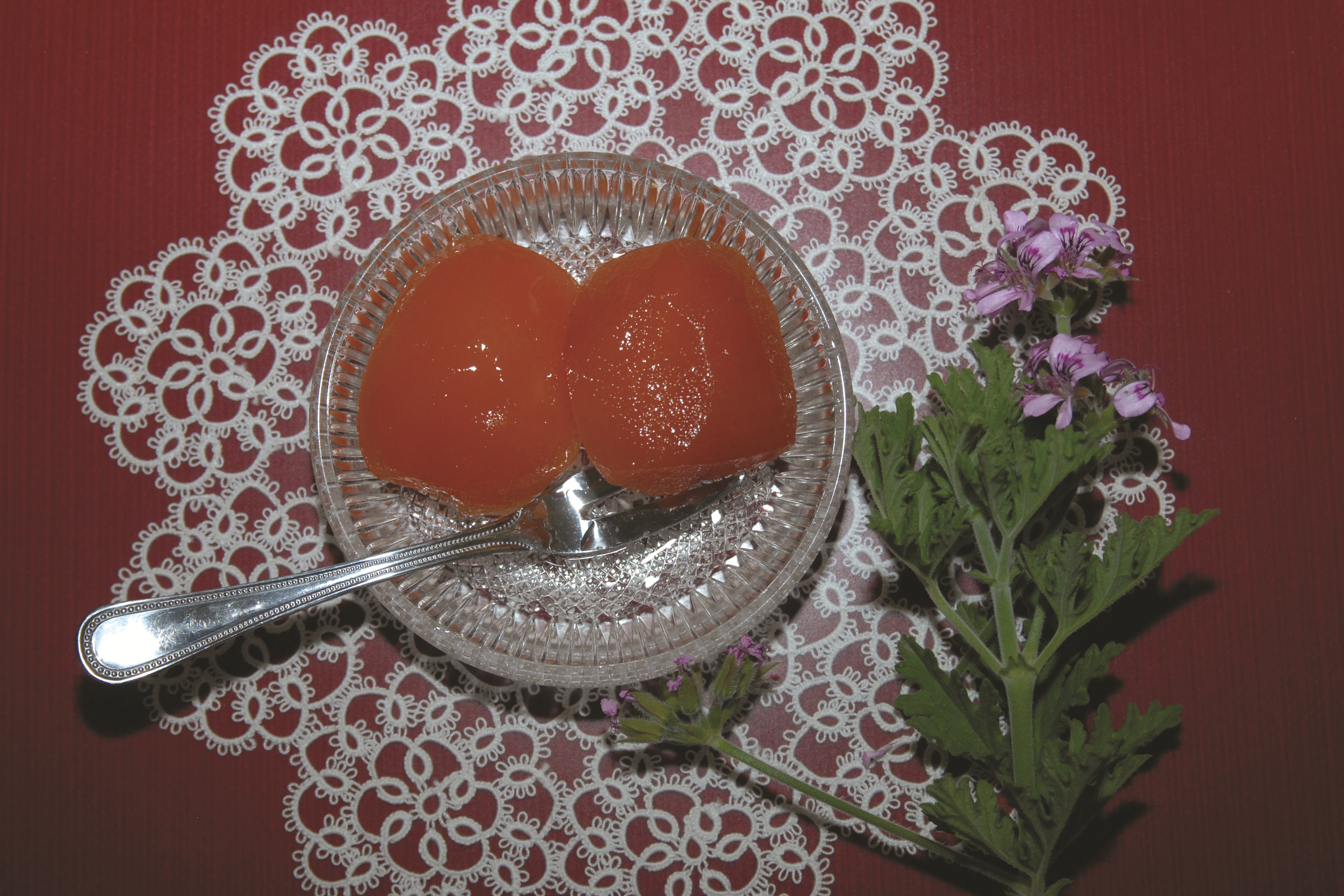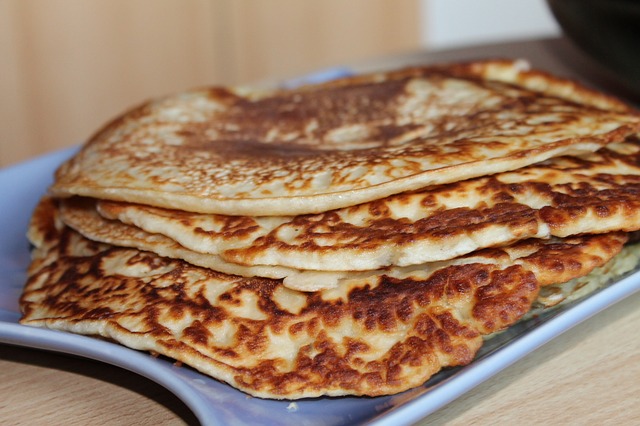Name - Origin
Most sweets, which Cypriots used to call "glytzistika", and which, to this day, are considered to be traditional, have their origins in antiquity and Byzantium, as their name often reveals: lalánghia, lalangoúthkia, langópittes of Karpasia, xerotíana, kaïganás, which we also find in Caesarea of Cappadocia, pastelli, which we find in Byzantine texts and in documents of the Venetian occupation, sesamotés, kioftérka.
The Byzantines used the call plakoundes, pemmata or melipikta those sweets made with dough and containing sweeteners. These names are all of ancient Greek origin. These sweets, although they had an archetypal form, were remarkable from a nutritional and gastronomic point of view and are still made today.
Functional and symbolic role
These sweets, the 'popasta', which contained one of the four sweeteners, can be roughly divided into two broad categories. The first category includes those containing wheat as a raw material in the form of flour or crushed wheat and sometimes oil. The second category includes those containing seeds, nuts or fruit, such as: sisamopittes, containing sesame seeds, pastelli, which was made exclusively from carob syrup and retshelia, which are considered by many to be the forerunner of the spoon sweets. After the end of the Byzantine period, when sugar became affordable and acceptable, Cypriots substituted honey with sugar and showed a remarkable dedication to spoon sweets in all the following centuries.
The sweets that were made for 'potherka' (after the end of harvest), or when the first oil would be produced, were rich and included 'ladopittes', 'pishies', 'xerotiana', 'sakopittes', 'kattimerka', 'langopittes'.
"In Lythragomi, on the day of the feast of St. Savvas, they used to make tertzellouthkia. They would even call the saint, tertzellan." in the village of Kampos tis Tsakistras, they used to make tertzellouthkia for the feasts of St. Varvara and St. Nicholas and they still make them until today.
Sweets were served in weddings, christenings and memorial services. From testimonies recorded by Kypri Protopapa we learn that on Monday and Tuesday following a wedding, they would offer glytzista, glytzistika, pishies or xerotiana.
Additional information and bibliography
Koukoules F (1952) Βυζαντινών Βίος και Πολιτισμός, Τόμος Ε., p. 119.
Rizopoulou-Igoumenidou, «Η παραδοσιακή μελισσοκομία στην Κύπρο και τα προϊόντα της (μέλι, κερί) κατά τους νεότερους χρόνους», Η μέλισσα και τα προϊόντα της, Cultural Technological foundation ΕΤΒΑ, p. 390.
Archim. Kyprianos (1788) Ιστορία χρονολογική της νήσου Κύπρου (reprint Nicosia 1974), p. 544.
Kypri Th. - Protopapa K. A. (2003), Παραδοσιακά ζυμώματα της Κύπρου. Publications of the Centre for Scientific Research, XVIII, Nicosia.
Florentia Kythraiotou
